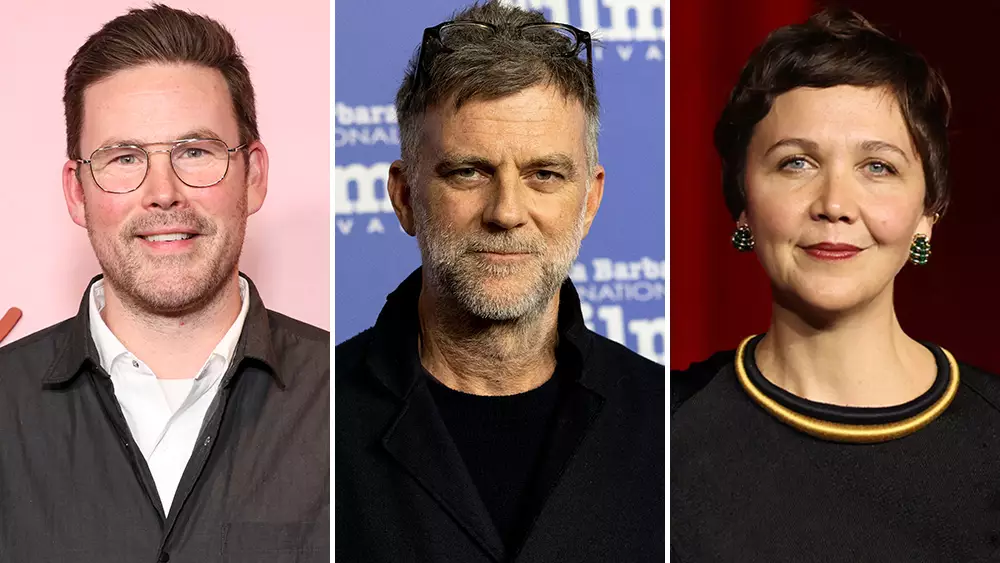Warner Bros. has disrupted the conventional film release landscape with recent strategic adjustments that signify both an artful understanding of market dynamics and shrewd business acumen. As the film industry struggles to regain its footing post-pandemic, these changes represent a potentially lucrative pivot that could shift the balance of box office power and resonate deeply with audiences.
Reconfiguring Release Dates for Maximum Impact
Warner Bros. has made several key release date alterations ahead of the crucial CinemaCon, slated to alter their fiscal outlook for the better. In a year marred by unpredictability and audience indecisiveness, the Burbank studio’s decision to optimize its calendar is astute. The recent failures of high-profile films like Bong Joon Ho’s “Mickey 17” serve as a potent reminder of the volatile nature of an audience already hesitant to fill theater seats. By repositioning key titles like Zach Cregger’s “Weapons,” Warner Bros. seems intent on grabbing the attention of targeted demographics, rather than relying on broad strokes.
The shift of “Weapons,” now set to release on August 8, pits it against Disney’s “Freakier Friday,” an interesting juxtaposition that showcases Warner Bros.’ willingness to compete head-on with established heavyweights. In an era where genre films are slowly reclaiming their place in the cultural lexicon, the positioning of “Weapons” signifies a calculated risk. If successful, this could further entrench Warner Bros. in the narrative of cinematic resurgence—a role they appear eager to embrace.
Impressive Financial Backing: The Cost of Artistry
It is essential to note that these strategic shifts are not without significant financial implications. For instance, Paul Thomas Anderson’s latest project, “One Battle After Another,” now scheduled for September 26—having moved from its original summer launch—carries an estimated budget of $140 million. While the talents involved, including Leonardo DiCaprio, Benicio Del Toro, and Sean Penn, promise a film of artistic merit, the financial stakes have never been higher.
Anderson’s proclivity for festival circuits, though less favored for this project, holds the potential to garner early accolades that could boost box office appeal upon public release. Warner Bros.’ robust backing of such an expensive project enhances its credibility as a risk-taker, despite the inherent uncertainties tied to auteur cinema. Believers in the power of storytelling might argue that the willingness to invest in such creatively driven projects is a hallmark of what cinema should represent: risk, reward, and an exploration of the human experience.
Adapting for the Future: The Role of Technology and Screens
An often-overlooked factor in these release strategy changes is the cinematic format. The relationship between Warner Bros. and IMAX is pivotal not just for boosting box office numbers but also for aligning audience expectations with the growing convergence of technology and cinema. The emphasis on IMAX and VISTA VISION screenings not only elevates the artistic presentation but also helps solidify the theatrical experience, granting films a competitive advantage over streaming services that lack the visceral engagement of large, specialized formats.
This focus on enhanced viewing experiences reflects a broader industry trend—a deliberate effort to infuse the cinema-going experience with a sense of eventfulness that streaming alone cannot provide. Given the ongoing rise of digital consumption, it’s vital for studios to reclaim the theatrical experience; for Warner Bros., this means leveraging every available avenue for premium formats.
Navigating the Competitive Landscape
Transitioning towards fall 2026, Warner Bros. faces a market rife with contenders. With major titles like Lionsgate’s “Saw XI” and Universal’s “Gabby’s Dollhouse: The Movie” looming close, the studio’s ability to carve out a distinct space for its projects will be essential. The release of “The Cat in the Hat” and the family-friendly “Flowervale Street” has been timed to maximize promotional opportunities and tap into genres that encourage repeat viewings, particularly in a landscape where family films are increasingly competitive.
It’s a precarious yet strategic dance that requires balancing the studio’s expectations with actual market realities. The outcomes of these films could both validate Warner Bros.’ release strategy and either reaffirm or challenge the direction of future projects within the studio.
The Broader Implications of Strategic Timing
The broader implications of Warner Bros.’ timing and scheduling merit consideration. By taking a measured, data-driven approach to release dates and genres, the studio appears entrenched in a desire to build a more sustainable and engaging cinematic environment. The seriousness with which the studio approaches box office success may define how the public perceives films in terms of both value and importance, pushing for a renaissance of sorts in theatrical attendance.
Would successful artistic films reclaim a place in popular culture if supported by shrewd marketing and release strategies? Here lies the potential for a brighter future for cinemas—a pathway towards engagement that resonates with diverse audiences while maintaining a critical focus on the artistic nature of filmmaking. Warner Bros. has positioned itself at the forefront of this transformation, and its influence could very well signal a new era for theater-going culture.

